Choosing the right cookware material can feel confusing. Using the wrong pan leads to uneven cooking and frustration. Triply circle material offers a smart solution for better kitchen results.
Triply circle material is a composite made of three bonded layers: an inner stainless steel surface, an aluminum core for heat, and a stainless steel exterior. This combination offers durability and excellent, even heat distribution^1.
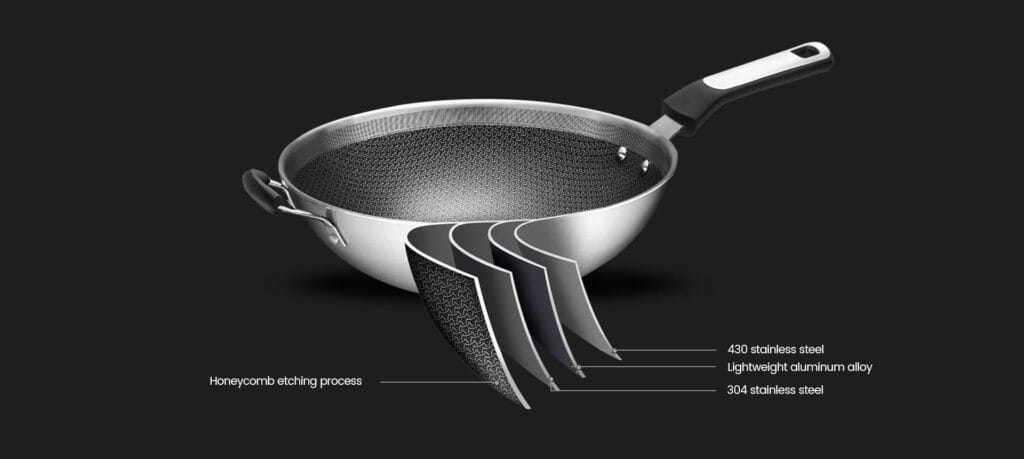
Understanding this material starts with seeing how it stacks up against more traditional options. As someone who has worked extensively in material selection and manufacturing, I know how important these details are, especially for designers like Jacky who need to optimize for both function and production. Let’s break down what makes triply special.
How is triply circle material different from traditional stainless steel cookware?
Tired of hot spots burning your food in stainless steel pans? Traditional pans often heat unevenly, making cooking a challenge. Triply material solves this with better heat flow.
The main difference is the aluminum core sandwiched between stainless steel layers in triply cookware. This core provides much faster and more even heat distribution compared to traditional single-layer stainless steel pans^2.
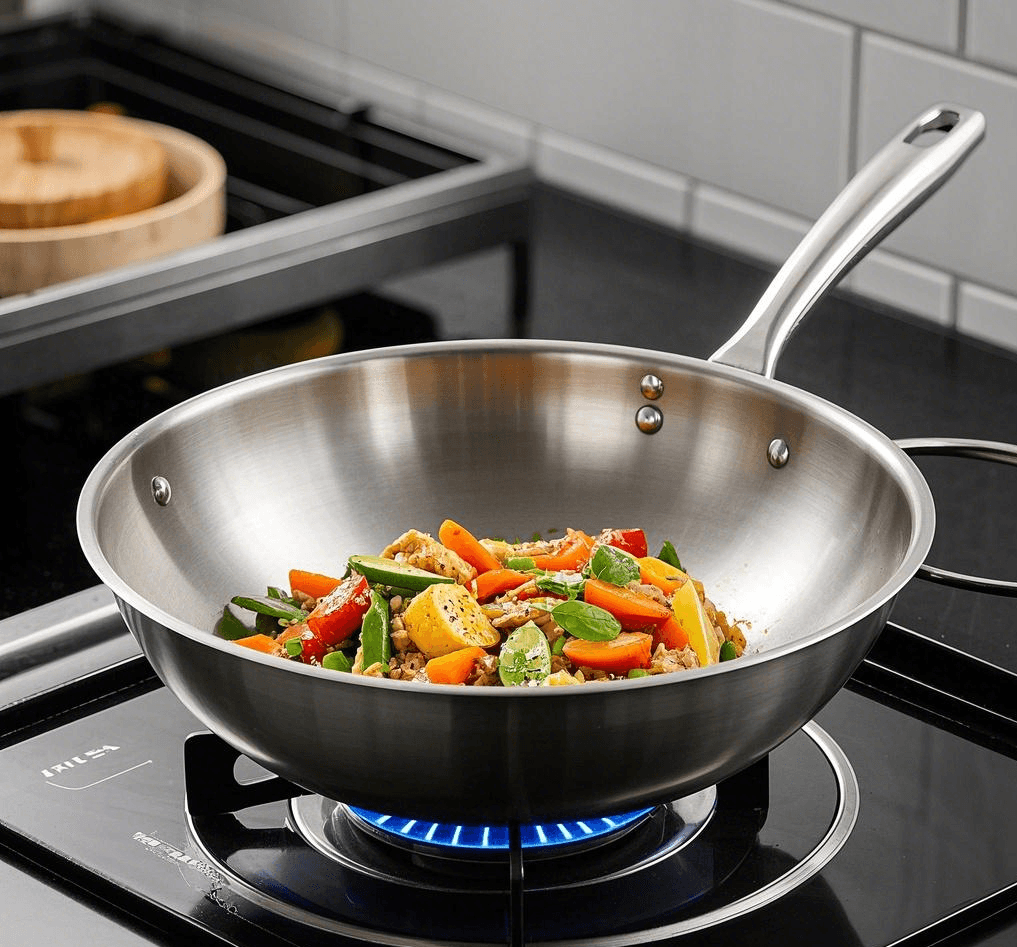
When I first started exploring cookware materials, the performance jump with triply was noticeable. Traditional stainless steel is tough, sure, but it doesn’t conduct heat very well on its own. This often leads to those annoying hot spots where food sticks or burns while other parts of the pan are still heating up. Triply construction directly addresses this.
Heat Conduction Explained
Aluminum is a fantastic heat conductor, much better than stainless steel^2. By placing a layer of aluminum in the middle, the heat from the stove spreads quickly and evenly across the entire base and even up the sides of the pan. This means your food cooks more uniformly.
Durability and Safety
You still get the benefits of stainless steel, though. The inner layer provides a safe, non-reactive cooking surface that won’t affect the taste of your food^3. The outer layer adds durability, corrosion resistance, and often makes the cookware compatible with induction cooktops^4. So, it’s like having the best of both worlds.
Comparison Table
| Feature | Traditional Stainless Steel | Triply Circle Material |
|---|---|---|
| Construction | Single Layer (Steel) | 3 Layers (Steel-Alu-Steel)^1 |
| Heat Distribution | Slower, less even | Fast, Very Even^2 |
| Hot Spots | Prone to hot spots | Minimized hot spots^4 |
| Durability | High | Very High^2 |
| Cooking Surface | Non-reactive | Non-reactive^3 |
| Induction Ready | Sometimes | Usually (if outer is magnetic SS)^3 |
| Weight | Moderate to Heavy | Often slightly lighter than thick single-ply |
For someone like Jacky, designing products that need reliable thermal performance, understanding this difference is key. It’s not just about looks; it’s about fundamental performance improvements.
What are the typical layers involved in the composition of triply circles?
Wondering what exactly makes up those triply pans? Not knowing the layers means you miss understanding why they work so well. Let’s look inside this clever material sandwich.
Typically, triply circle material consists of an inner layer of food-grade stainless steel, a middle core layer of aluminum, and an outer layer of durable (often magnetic) stainless steel^3.
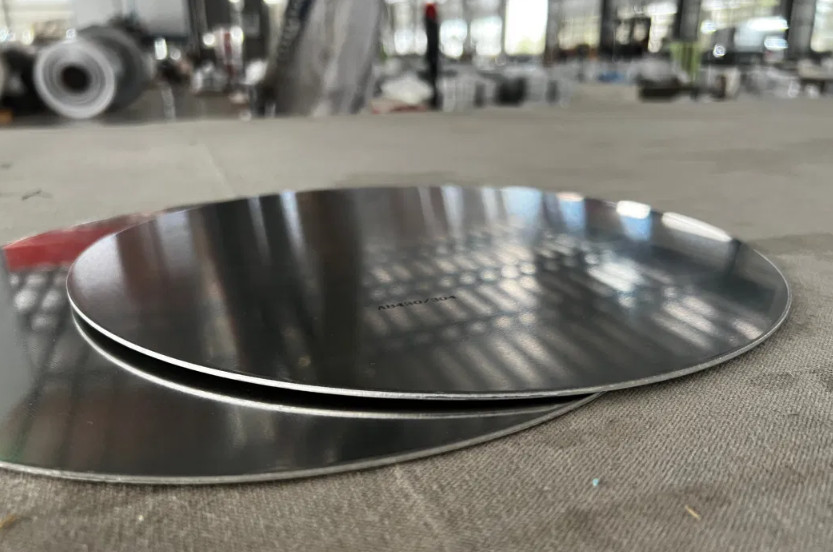
Each layer in a triply circle plays a crucial role. It’s a carefully engineered system, not just random layers stuck together. I’ve seen similar layered composites used in various industries, and the principle is always to combine the best properties of different materials.
The Inner Layer: Food Contact
The layer touching your food is usually high-quality, food-grade stainless steel (like 18/8 or 18/10)^3. Why steel? It’s extremely durable, resists scratches and corrosion, and most importantly, it’s non-reactive^4. This means it won’t interfere with the taste or color of your food, even acidic ingredients like tomatoes or lemon juice. It also provides a safe cooking surface.
The Middle Layer: The Heat Engine
This is where the magic happens. The core is almost always aluminum^5. Aluminum’s superpower is its excellent thermal conductivity^2. It heats up fast and spreads that heat evenly across the entire pan, eliminating the hot spots common in lesser materials^4. This layer often extends up the sidewalls of the cookware, ensuring even heating all around, not just on the bottom.
The Outer Layer: Durability and Compatibility
The exterior layer is typically stainless steel again, often a magnetic type (like 18/0)^3. This outer steel provides toughness, protects the softer aluminum core, resists warping, and gives the cookware its structure and shine^2. Crucially, if it’s magnetic stainless steel, it makes the cookware compatible with induction cooktops, which are increasingly popular^4. This layer ensures the cookware lasts and works on virtually any stove.
Understanding this structure helps designers like Jacky appreciate the material science involved in creating high-performance cookware.
What manufacturing process is used to create triply circle material?
How do manufacturers permanently bond these different metal layers? If the bond isn’t perfect, the pan won’t perform well. Understanding the manufacturing ensures confidence in the material’s quality.
Triply material is made by permanently bonding sheets of stainless steel and aluminum together under high heat and pressure, typically using processes like roll bonding or cladding^1.

Creating this material isn’t as simple as just layering sheets. The bond needs to be incredibly strong and seamless for efficient heat transfer. I’ve worked with bonded materials in mold making, and the precision required is significant. Here’s a breakdown of how it’s usually done:
Step 1: Material Preparation
It starts with selecting high-quality sheets of the specific stainless steel grades needed for the inner and outer layers, and a sheet of aluminum for the core^1. Cleanliness and surface preparation are critical at this stage to ensure a good bond.
Step 2: Layering and Bonding
The cleaned sheets are carefully stacked in the correct order: stainless steel, aluminum, stainless steel. This stack is then subjected to immense pressure and high temperature.
- Roll Bonding: The most common method involves passing the layered stack through powerful rollers^1. The extreme pressure forces the metals to fuse at a molecular level, creating a permanent bond across the entire interface.
- Cladding: Another term often used, sometimes involving explosive bonding or other high-energy methods, but roll bonding is typical for cookware materials^3.
Step 3: Heat Treatment
After the initial bonding, the composite material often undergoes a controlled heat treatment process^1. This further strengthens the bond between the layers and optimizes the material’s properties, ensuring it remains stable and durable even under repeated heating and cooling cycles during cooking.
This complex process results in a single, unified sheet of triply material that can then be cut, stamped, drawn, and formed into pots and pans^3. It’s definitely more involved and costly than making simple single-layer cookware^6, which explains the higher price point of quality triply products.
What are the benefits of using aluminum as the core layer in triply cookware?
Why is aluminum the star player in the middle layer? If it’s just hidden, does it really matter? Discovering aluminum’s specific advantages reveals why it’s essential for top-tier cookware.
Aluminum’s primary benefits as a core layer are its excellent thermal conductivity for rapid, even heating, and its relatively light weight, making the cookware easier to handle^2.
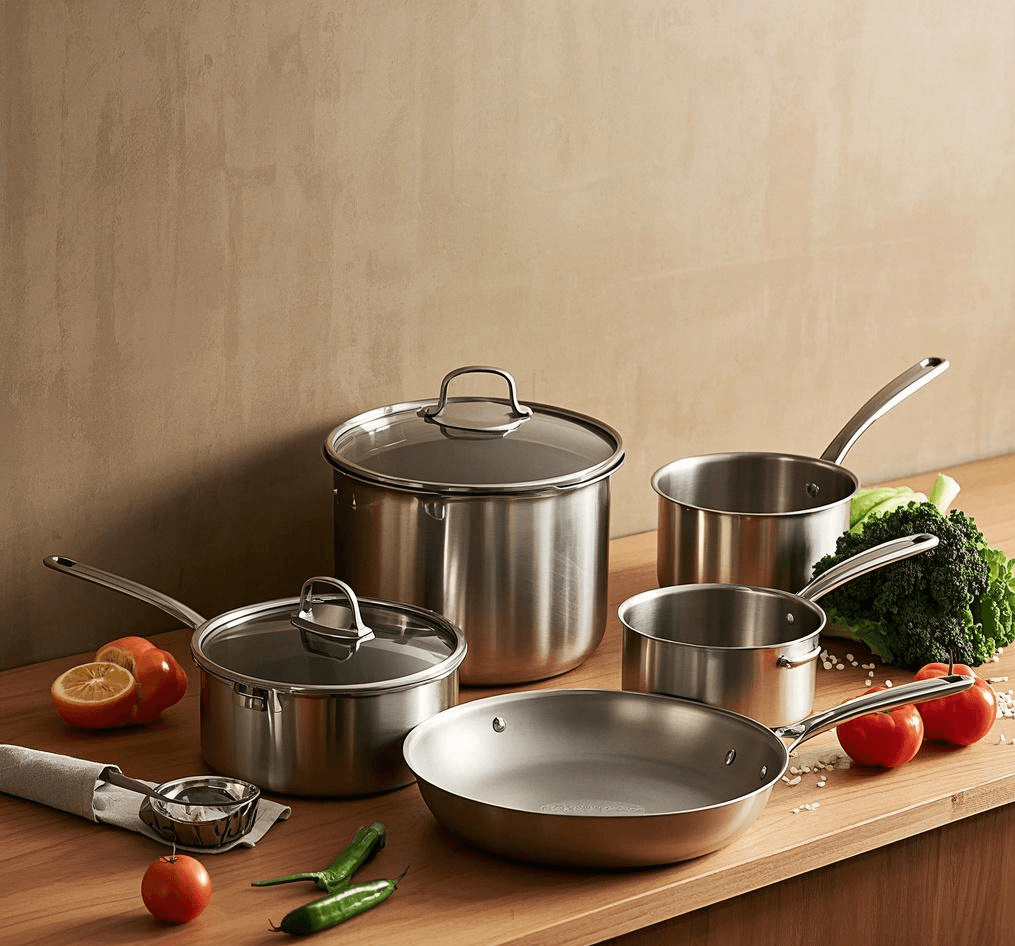
When designing any product, material choice is critical. For cookware, how it handles heat is paramount. While stainless steel is great for durability and safety, it’s not the best at moving heat around. That’s where aluminum shines.
Superior Heat Conduction
Aluminum conducts heat much more effectively than stainless steel^2. Think of it like a highway for heat energy. When you put a triply pan on the stove, the heat quickly travels through the outer steel layer into the aluminum core. The aluminum then rapidly distributes this heat across the entire base and up the sides^4. This prevents hot spots, ensuring food cooks evenly without burning in one area while being undercooked in another. It also means the pan heats up faster, saving time and energy^5.
Lightweight Advantage
Compared to other metals with good heat conductivity (like copper), aluminum is significantly lighter^2. While triply cookware is generally substantial due to the multiple layers, using aluminum helps keep the weight manageable. If the core were made of copper or entirely of steel, the pans would be much heavier. This makes a difference in everyday use, especially with larger pots and pans.
Cost-Effectiveness
While copper is also an excellent heat conductor (even slightly better than aluminum), it’s much more expensive. Aluminum provides outstanding thermal performance at a more reasonable cost, making high-performance triply cookware accessible to more people.
For designers like Jacky, leveraging aluminum’s properties allows for cookware that performs exceptionally well thermally without being excessively heavy or expensive. It’s a smart engineering choice.
Conclusion
In essence, triply circle material cleverly combines stainless steel’s durability and safety with aluminum’s superb heat conduction. This layered structure results in high-performance, long-lasting cookware preferred by many cooks^6.

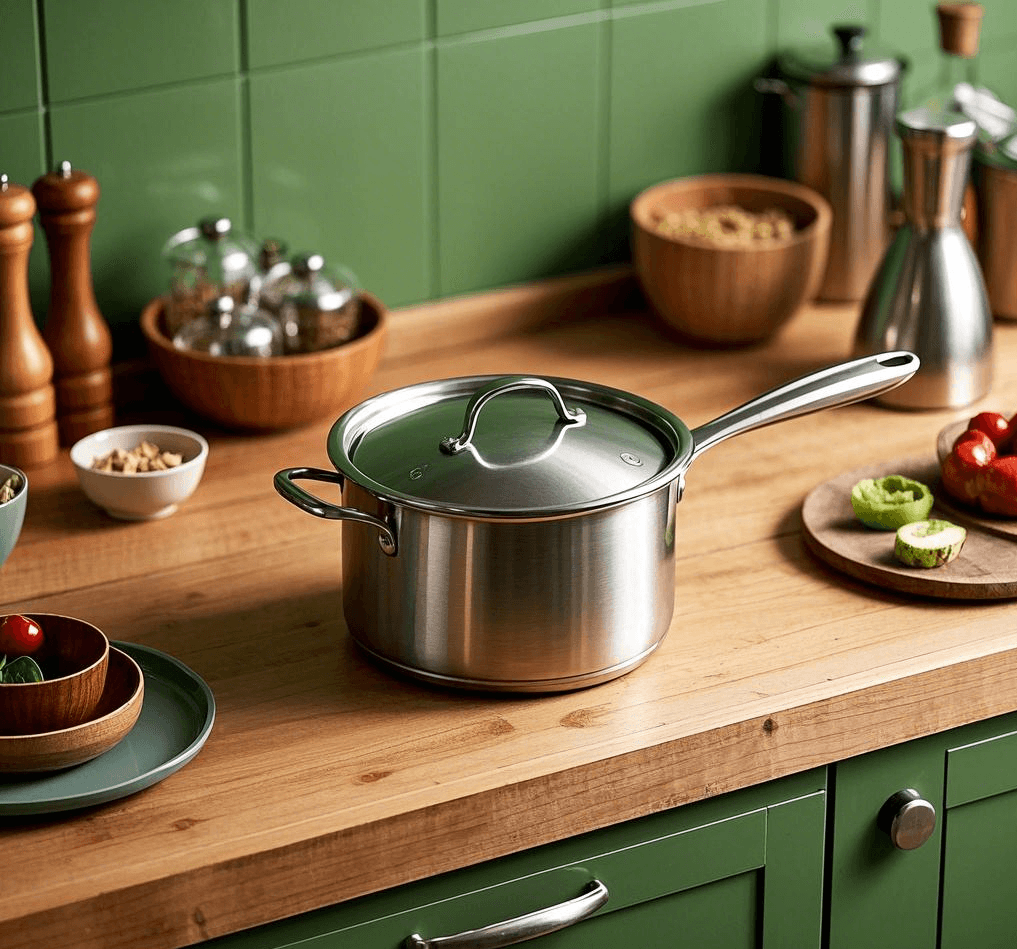

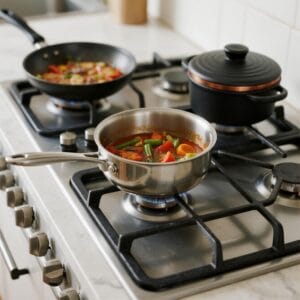
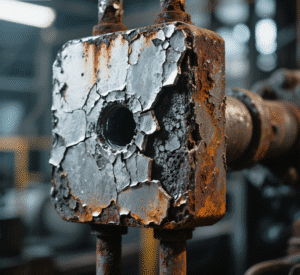
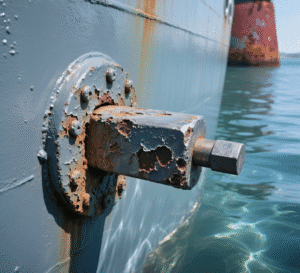
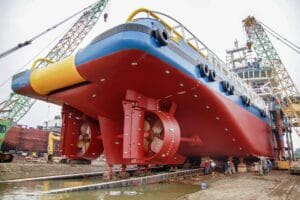
One Response